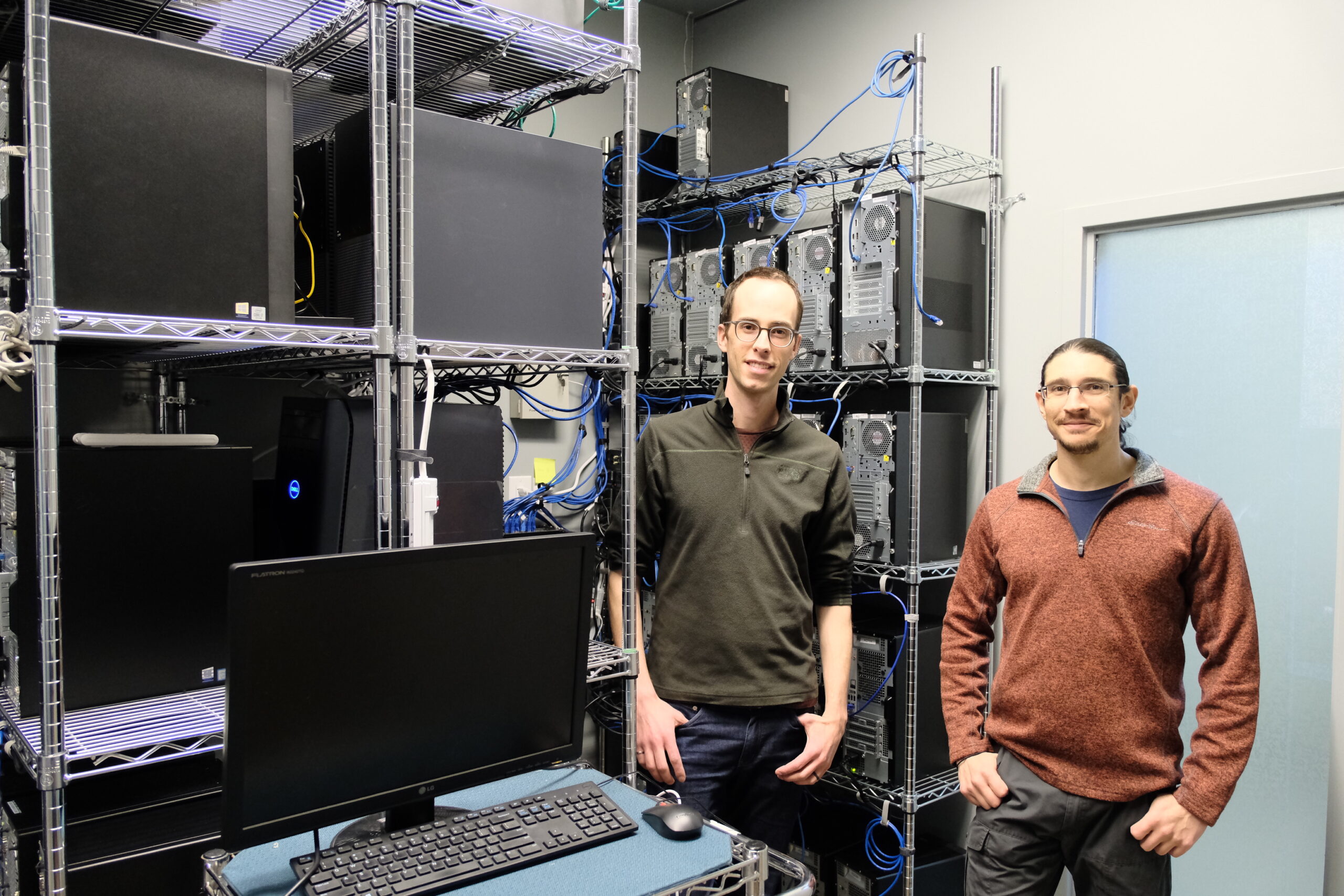With support from the Ontario Water Consortium’s Water Industry Growth Program, Aquanty is making real-time flood forecasting a reality by adding machine learning to its HydroGeoSphere platform.
As climate change increases the frequency and intensity of extreme weather, flood forecasting is becoming increasingly important. But creating accurate predictions has never been easy, and shifting precipitation patterns only add to the challenge.
Aquanty knows all about the issues. In 2012, the Waterloo-based company was launched to commercialize HydroGeoSphere, a hydrologic simulation platform developed by researchers at the University of Waterloo and University of Laval.
The platform allows Aquanty to run simulations for clients based on geological and hydrological data — for example, to assess the flood risk if the Grand River watershed received 50 millimetres of rain in a week.
However, HydroGeoSphere can only model the impact of potential scenarios, not predict what will actually happen. So a few years ago, Aquanty created HGSRT (or HydroGeoSphere-RealTime). This cloud-based modelling system combines watershed scale HydroGeoSphere models with real-time observation data on water levels and streamflow, then pushes the simulation into the future using typical meteorological predictions. The result? Reliable forecasts for floods, droughts, soil moisture, groundwater and more.
“We basically build really advanced digital twins of landscapes of a watershed,” explains Brayden McNeill, Aquanty’s technical sales and marketing lead. “We plug in the daily weather forecast, and that allows us to drive forward these simulations over weeks or months.”
Adding the machine learning advantage
Today, Aquanty provides access to integrated hydrologic forecasts for 13 watersheds across Southern Ontario, and two major river basins spanning across Alberta, Saskatchewan and Manitoba. But there are limitations. Their current physics-based models require detailed information about the watershed, such as the topography, soil types and amount of vegetation. And crunching all that data takes significant bandwidth.
“We have one of the world’s most powerful systems for modeling the movement of water,” McNeill says. “[But] it takes a lot of time, and a lot of expert hours and effort, and a ton of data to build these really physically realistic models.”
AI offers new ways to address those challenges. Studies show that machine-learning models are extremely good at predicting stream flow discharge. They tend to perform better and run faster than physical models. On top of that, you don’t need to train machine-learning models using data from a specific watershed — just data from a sufficiently large number of other watersheds.
“They are much more scalable, so we can deploy the machine-learning forecast in a lot more watersheds without much preparation,” says Andre Erler, senior climate scientist at Aquanty.
Making real-time forecasting a reality
So with help from OWC’s Water Industry Growth (WIG) program — which supports the development of water technologies in Ontario — Aquanty is now integrating those capabilities into their platform.
“What we’re working towards essentially is putting the pieces in place so that we can combine the best strengths of both the physics-based approach to modeling and the machine-learning-based approach to forecasting stream flows,” says McNeill.
WIG funding allowed them to hire a co-op student to work on the machine learning, pulling together scads of stream flow and meteorological data to train their models and develop the forecast algorithms. Having someone to focus on that task full time was hugely valuable, says Erler. “Because we’re a small company, it’s difficult to dedicate time to something that’s not a funded project,” he explains.
WIG also helped them create infrastructure they needed to integrate detailed weather forecasts into their model. “We actually had to completely overhaul our database system,” Erler says. “We learned a lot of things and we improved our platform a lot.”
As a result, they now have machine-learning models that can produce highly accurate predictions, whether it’s a few hours into the future or a month. And as one of the only companies in Canada currently doing this kind of forecasting, they’re well positioned to meet a growing need for advanced forecasting tools.
Equipping communities with crucial tools
In Ontario’s urban areas, enough data already exists for physical models to do a reasonable job at forecasting floods. However, Aquanty sees potential to improve the accuracy of those forecasts with their machine-learning models. “Fast-moving flood peaks is really something where the physical models struggle. And this is where the machine-learning models can be much better,” says Erler.
But he believes it’s the data-deficient rural areas that have the most to gain. “There’s usually not enough geological data available to build a physics-based model,” he explains. “Or even if there is, there’s not enough population density to really justify the work input that’s necessary.”
But flood forecasting is important in these areas. McNeill points to Abbotsford, B.C., where catastrophic floods caused an estimated $2 billion in property damage in 2021, killed hundreds of thousands of farm animals and cut off the Trans-Canada Highway.
Machine learning technologies like Aquanty’s offer a solution, making real-time flood prediction better and easier for small and large communities alike. “[This] could potentially be something that is really a game changer,” says McNeill.
WIG supports industry innovations that accelerate growth, create jobs and strengthen Ontario’s water sector. For more information, click here.


